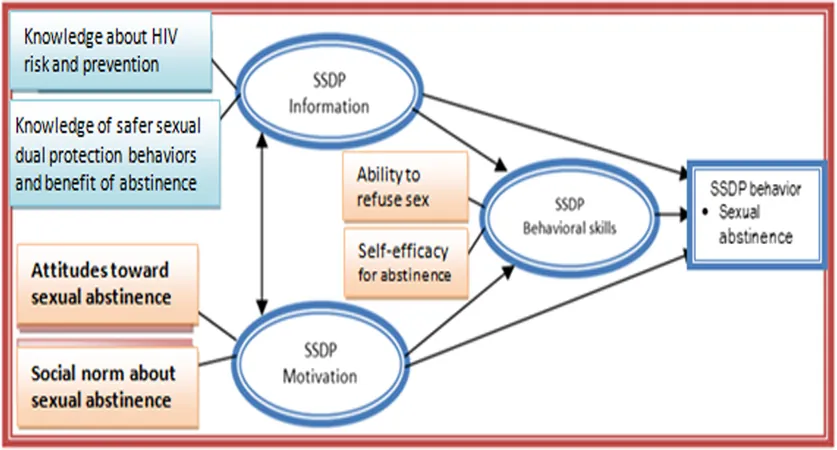
Unveiling the Truth: The Factors Influencing Sexual Abstinence Among Female University Students in Ethiopia
2025-03-28
Author: Daniel
Introduction
The fight against sexually transmitted infections (STIs) and unintended pregnancies remains an uphill battle, particularly for young women in Ethiopia. With the IMB (Information-Motivation-Behavioral Skills) model as a framework, researchers have aimed to unravel the complexities behind sexual behaviors among the youth. Despite its usefulness in promoting safe sex strategies, the application of the IMB model to sexual abstinence, particularly among female university students in Ethiopia, has been limited. This groundbreaking study seeks to fill that critical gap.
Methodology
Conducted at Mattu University from May to June 2023, this cross-sectional study surveyed 1,020 female students. Utilizing a self-administered questionnaire, researchers collected data on the participants’ sociodemographic characteristics, levels of information and motivation regarding sexual health, and overall sexual behavior. The analysis was performed using SPSS version 23, with sophisticated structural equation modeling for deeper insights.
Key Findings
Among the surveyed participants, 61.2% reported practicing primary sexual abstinence. The study highlighted that motivation, behavioral skills, and information were strong predictors of abstinence among the students, explaining approximately 28% of the variance in abstinence practices.
- **Motivation**: (β = 0.34, p < 0.001) - **Behavioral Skills**: (β = 0.24, p < 0.001) - **Information**: (β = 0.11, p < 0.001) These elements played a significant role in influencing the students’ decisions to remain abstinent, showcasing the practical application of the IMB model in addressing sexual health issues.
Broader Context
Globally, the HIV epidemic continues to claim lives, with young women disproportionately affected. In Ethiopia alone, unmarried women face alarming rates of HIV prevalence at 9%. Furthermore, the public health landscape is underscored by high rates of unintended pregnancies among young women, with 37% of all unwanted pregnancies occurring in the 20-24 age group as of 2011.
The social norms and limited access to sexual health education further amplify the vulnerability of young women. Therefore, programs focusing on dual protection strategies, which include both STI prevention and pregnancy avoidance, are essential to mitigate risks.
Implications for Future Interventions
The insights from this study not only advance the understanding of sexual behavior but also raise critical implications for intervention design. By honing in on the information and motivation aspects highlighted by the IMB model, tailored programs that foster positive attitudes and equip young women with necessary skills could prove instrumental in promoting sexual abstinence, ultimately reducing the risks related to STIs and unintended pregnancies.
Conclusion
This study not only underscores the power of the IMB model in predicting sexual behaviors but also signals an urgent call for targeted interventions to safeguard the sexual health of young women in Ethiopia. As the landscape of sexual health continues to evolve, understanding these crucial determinants will pave the way for successful strategies that genuinely resonate with the youth, ensuring brighter and healthier futures for them.


 Brasil (PT)
Brasil (PT)
 Canada (EN)
Canada (EN)
 Chile (ES)
Chile (ES)
 Česko (CS)
Česko (CS)
 대한민국 (KO)
대한민국 (KO)
 España (ES)
España (ES)
 France (FR)
France (FR)
 Hong Kong (EN)
Hong Kong (EN)
 Italia (IT)
Italia (IT)
 日本 (JA)
日本 (JA)
 Magyarország (HU)
Magyarország (HU)
 Norge (NO)
Norge (NO)
 Polska (PL)
Polska (PL)
 Schweiz (DE)
Schweiz (DE)
 Singapore (EN)
Singapore (EN)
 Sverige (SV)
Sverige (SV)
 Suomi (FI)
Suomi (FI)
 Türkiye (TR)
Türkiye (TR)
 الإمارات العربية المتحدة (AR)
الإمارات العربية المتحدة (AR)